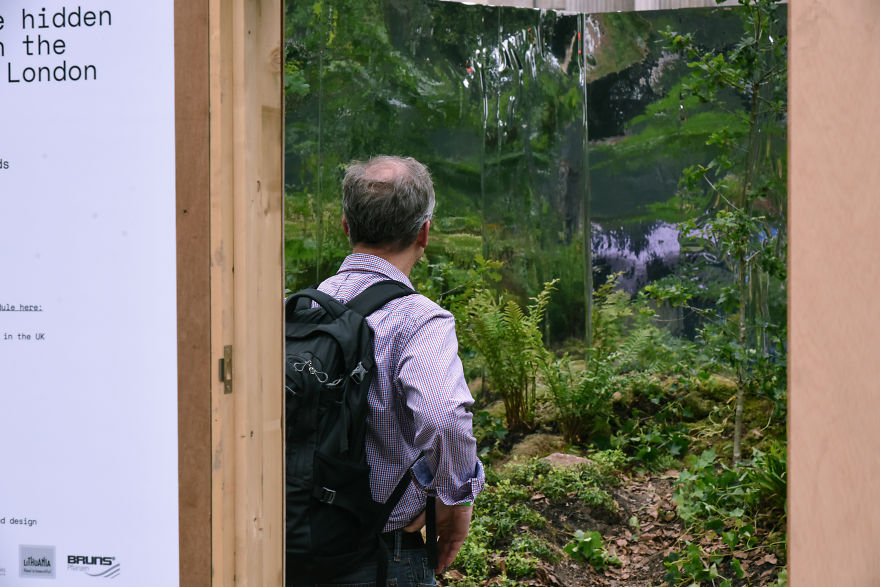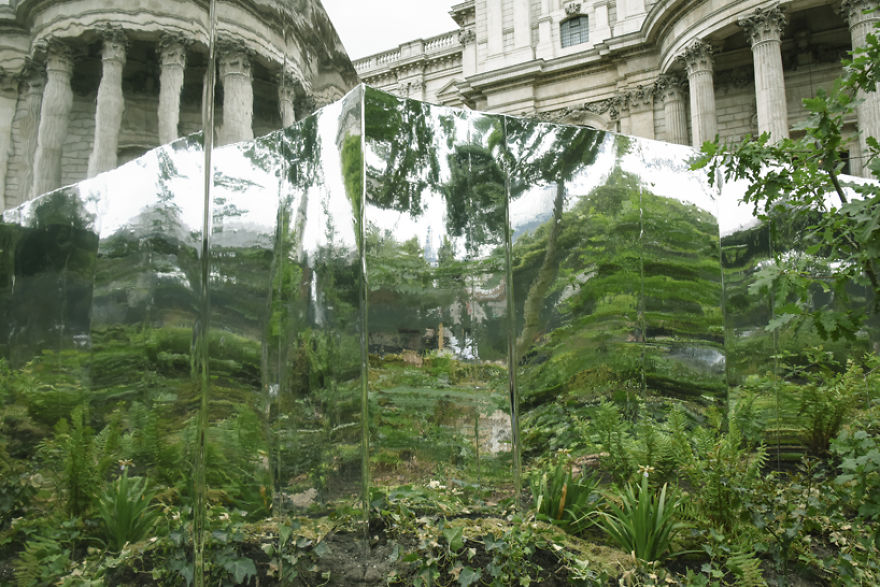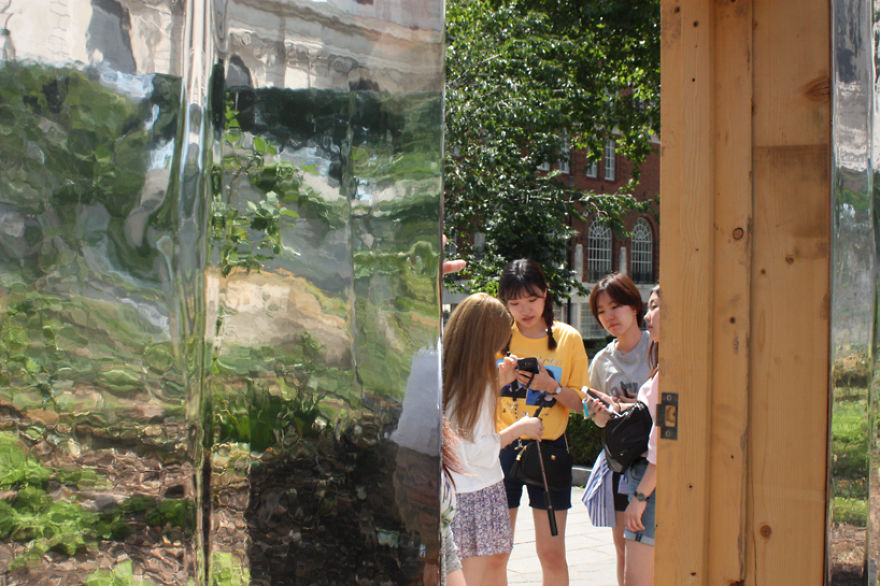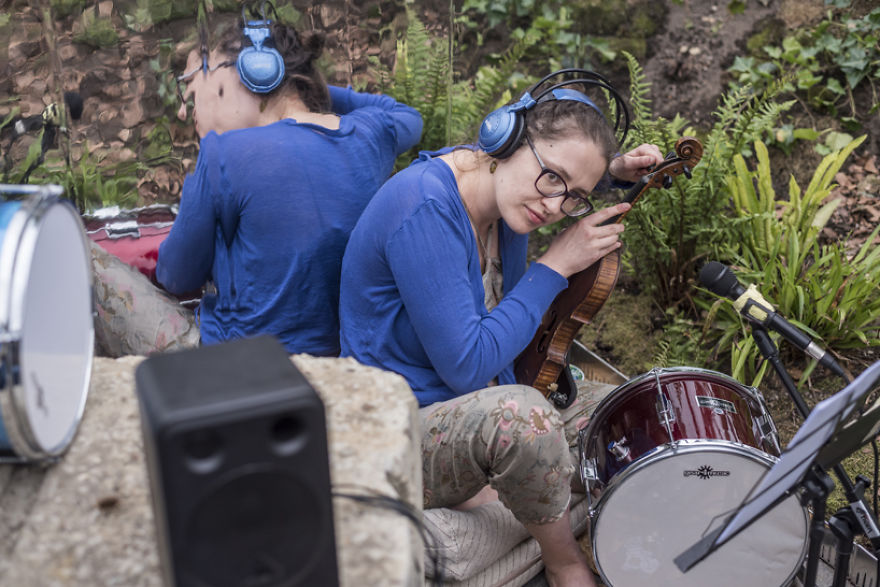A highlight art installation of the London Festival of Architecture 2018 called The Building Site brings a section of secluded Lithuanian forest in front of St Paul’s Cathedral. I’m a landscape architect and an artist, Sigita Simona Paplauskaite, and I’ve designed an immersive environment that seeks to question the rapid urban development and its impact on the human relationship with the Mother Nature.
Open during London Festival of Architecture, The Building Site addressed the growing concern around the changing ownership of public spaces and city gardens in London and invited its visitors to reflect on the consequences of urbanization on local communities and natural ecosystems. The installation occupied a significant surface of public space, creating an alternative construction site – a signature mark for London in transition. Utilizing the aesthetic of a temporary hoarding from the outside, the pavilion offers a beautiful forest-like experience from within.
The Building Site was inspired by a poetic narrative of Lithuanian writer, poet and philologist Vincas Kreve-Mickevicius’s novel ‘Herdsman and the Linden Tree.’ The fictional novel describes the parallel lives of the oldest man and oldest forest tree in the village, exposing a human connection to nature and mapping how this relationship changed over time. Reflecting on the highly engineered environments of both humanity and beautiful nature, The Building Site seeks to represent the confrontation between the life of man and the living world in an age of rapid external pressures.
Over the course of the whole month of June, The Building Site hosted poetry readings, concerts, performances, video screenings, and debates every weekend. During these events, the visitors had a chance to explore the diversity of uniquely artful interpretations of the human relationship with nature.
More info: sigitasimona.com
This installation was one of the highlight and core London Festival of Architecture events, responding to the subject of ‘Identity’
It brings a section of secluded Lithuanian forest in front of St Paul’s Cathedral
During the build up works, it was not known to be an art piece, whereas later it opened its door to public and was nourished by rich cultural event programme
The Building Site aimed to question the changing ownership of public-private land in London
It attracted over 17,000 active visitors during the month of June
The urban installation recreated a section of a forest reminding of growing ecological concerns in urban planning strategies
It occupied a significant surface of public space, creating an alternative construction site – a signature mark for London in transition
Reflective on the inside, it not only increased the interior volume, but as well gently reminded of its context – one of the most active and polluted streets in London
Utilising the aesthetic of a temporary hoarding from the outside, the pavilion offers an unexpected forest-like experience from within
Mesmerizing by its visual impact, the space accumulated woodland planting colours and scents
Tourists, locals and professionals – everyone was up for a debate about the ongoing urban planning processes and their consequences
The Building Site seeks to represent the confrontation between the life of man and the living world in an age of rapid external pressures
The composer Ruta Vitkauskaite offered a unique vocal and instrumental experience meanwhile sharing wi-fi headphones with those who could not fit inside the installation
Open daily, the Building Site welcomed visitors throughout all the month
Here’s where you can find it in London
6Kviews
Share on FacebookExplore more of these tags
Love it. I have a feeling that humanity often views itself as something isolated from nature (as something better, smarter etc. and isolating itself with its towns) and doesn't realize we're part of the nature and need it to live but that the Earth and many of its species can easily continue to live without us.
Love it. I have a feeling that humanity often views itself as something isolated from nature (as something better, smarter etc. and isolating itself with its towns) and doesn't realize we're part of the nature and need it to live but that the Earth and many of its species can easily continue to live without us.

 Dark Mode
Dark Mode 

 No fees, cancel anytime
No fees, cancel anytime 

































































100
5